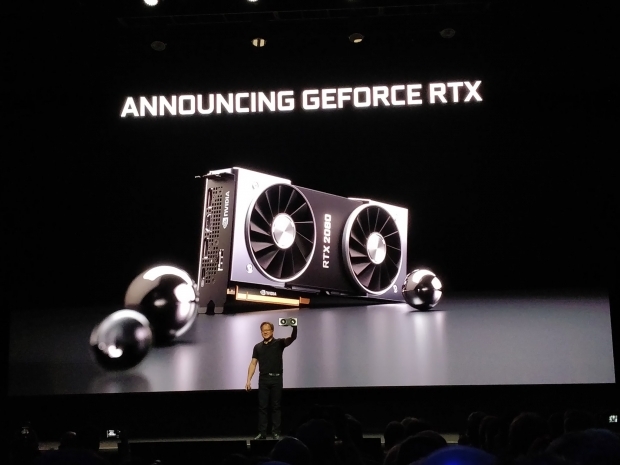Nvidia’s CEO used its previous Geforce GTX 1080 TI performance to compare the new RTX 2000 series performance in Ray Tracing. You will have to see the actual rasterization (traditional rendering) your GPU is doing right now, to make any final buying decision and potential recommendation. Some people jumped the gun and simply recommended the RTX buy but, then again, it is wiser to wait for official reviews before you make the final buying decision. The possibility of Nvidia selling out the RTX to early adopters is however very high end real.
The fact that Nvidia is comparing its performance to its own high-end cards means that the competition, for now, has been rendered obsolete - at least in this super high-end market. That gives the company the power to increase the pricing and price it whenever it wants. $1000 or Eur is a lot and $1200 or even more is just obscene, however, people will still buy these cards. Founders, Overclocked, custom etc will simply cost even more.
Lack of Radeon competition
These are prices caused by lack of competition. The Radeon Vega 64 is not competitive at all even to 1080 TI, let alone the new Geforce RTX.
The lack of competition means that whoever is on the top of the food chain is going to dictate prices. Gamers and end users will end up paying the premium and this has been the case for a long time.
One can argue that super high-end cards such as 2080 TI are not necessary and that 98 percent of customers won't even get one for either $999 or $1200 as this is the Ferrari of the GPU market.
Most customers will be happy and overwhelmed by the performance of 2080 and end up paying a more reasonable $699 for non-overclocked cards. Even the $500 Geforce RTX 2070 will get you great performance in existing and future games.
Ray tracing, the future
Ray Tracing at least the bit that 20ish games will be showing will be for top spenders, there is no doubt about that, but with time RTX series will go to more reasonable parts of the market. The potential 2060 will definitely end up cheaper whenever Nvidia decides that it is time to launch such a product.
This is like the phenomenon where the supreme leaders of Apple jacked up the prices of their phones with almost every generation getting to more than $1000 for an iPhone X. A decade ago, it wanted half of that money for the high-end phone. Samsung and Huawei followed the price increase and started selling their phones for $800 instead of $500 ish and they also increased sales.
Phones with increases pricing appeared to the market more valuable, that is how crazy we consumers are. Minds simply got tricked into the trap that paying $1000 and even $1200, Euros or UKP for a phone is OK. It is not and it should not be as a phone, for the most part, is a glorified toy that lets us do a lot of time wasting and use it some five percent of the time for actual work. Very few today are ready to spend the same amount of money, let's say 1000 - 1200 EUR/USD or UKP for a laptop but spending that money on a phone is OK. People do actually work on laptops, I have seen it happening.
So the real answer to the question of the RTX being expensive depends on a case by case basis. One can hardly call them inexpensive and bear in mind that Nvidia had to spend millions of dollars in R&D to get to this card. Someone has to pick up that bill and market Nvidia some nice margins. At the end, it is all about making gamers happy while making a profit.
So until the market stops buying what it believes might be overpriced, the companies will keep increasing the price. It is as simple as that.




